He has been published in National Geographic, Condé Nast Traveler and Marie Claire, selling fine art prints worth 10,000 USD and staging international exhibitions around the world. Within just three years, travel photographer Réhahn Croquevielle, simply known as Réhahn to most, has risen to the topmost levels of photography. Réhahn, 36 years old and from Normandie, France is probably best known for his documental portraits of the vanishing cultures in Vietnam which he now calls his home. On his motorbike, Réhahn has explored the furthermost corners of the country, bringing back colorful images which found their way into his best-selling book “Vietnam. Mosaic of Contrasts”. But besides being an established photographer and intrepid traveler, Réhahn is also a keen entrepreneur. In my recent interview I was able to ask him about all three aspects of his life and how it is all connected.
ESCapology: At age 32 you left a stable career in France, sold your business and moved to the town of Hoi An in Vietnam. Can you tell me more about this move and the reason behind it?
Réhahn: I first came to Vietnam in 2007 because I and my wife were sponsoring a child over there at that time. I wanted to meet that little girl, her sister, and her small family who was based in Hoi An. Despite the fact that it was my first trip to Asia, I instantly fell in love with Hoi An, Vietnam as a whole and its wonderful people. It was amazing. I stayed with this local family for four days and something special and magical happened between us. When we left, we promised to come back and we did every single year afterwards. Over time our visits became longer and longer. Each time we were leaving Hoi An, going back to France became harder and harder. Imagine living in a small Vietnamese town for two months. It just changes you as a person and it definitely changed me.
At one point, I somehow felt that Hoi An had become my real home. Nothing really held me back in France anymore. So three years ago, I sold the printing company I had back then, sold my car, the few things I owned and returned to Hoi An for good. I built a house with a few rooms to rent out as sort of a homestay. At that time, I also started to get a lot more serious about my photography.
Everything here moves at a slower pace, less stress, less rules and much more freedom.
Generally, life in Vietnam is completely different than it was back home. Everything here moves at a slower pace, less stress, less rules and much more freedom. I can really say that I feel a lot freer than I ever did before. Everything seems to be possible here. You can open a gallery, publish a book, run a guesthouse or a restaurant and it is all less regulated than in France. Freedom is probably the single most important thing I gained by moving here to Vietnam.
Réhahn the Traveler – The Search for Freedom
ESCapology: You are very much into exploring the country by motorbike. It’s also my favorite mode of traveling and I actually wrote a series of articles about it. What do you exactly like about it and how does it help with your photography?
Réhahn: For me as a photographer, it is the best way to travel in Vietnam. The roads are usually good and believe it or not, I find it safe to ride here. The type of photography I do requires a lot of time to get in touch with people, to socialize and to talk to them. That’s what real travel photography is about. I don’t do street photography or steal photographs from people by secretly clicking away from a distance. But getting in touch with the minorities here in Vietnam is not so easy as they are hard to reach. They often live in very remote places, high up in the mountains, in small villages far off the beaten track. These places are hard, often impossible to get to by car.
With a motorbike this is usually not a big problem. You are also very flexible and not tied to a set itinerary. You can stop where you want to and you can stay in places as long as you want to. Especially for the kind of photography I do, which, as I mentioned, requires time, this is a huge benefit. During my tours, I often discover small roads that I usually try to explore. Sometimes they will lead to nowhere, but often they take me to small, hidden villages that make for brilliant photo opportunities. Great images can also be found just along the roads in Vietnam. Traveling by motorbike gives you the freedom to stop and take that special image which you surely would have missed if you were in a car. Traveling by motorbike gives us photographers the most freedom in the quest for great images.
ESCapology: One of the regions you have extensively toured by motorbike and especially enjoyed is the Ha Giang region up North, close to the Chinese border. Would you say that is your favorite destination in terms of photography in Vietnam?
Réhahn: I like the North more than any other region in Vietnam. That is because Vietnam has 53 ethnic minorities and only ten of them still wear their traditional dresses and ornaments. This is definitely a vanishing culture and most of these tribes live in the North. This part of the country is also famous for its beautiful, curved rice terraces, and with the locals working in the fields, wearing their traditional garments, it just makes for fantastic pictures. One of the most photogenic places, and also probably my favorite, is the Dong Van Sunday Market. It’s an incredible explosion of colors and when I was there for the first time, I took more than 1,200 photos.
I have been to the Central Highlands and to the South but the North of the country is just my favorite, both for traveling and photography. Riding my motorbike up there is simply amazing. Going down the Ma Pi Leng pass, the gigantic canyon below, the bright sun above, the road twisting and winding, rice fields passing by and the wind in your hair … it makes you just wanting to close your eyes, breathe deeply and enjoy that freedom you have up there.
ESCapology: Vietnam is your new home, the place where your photography evolved and your most well-known images have been created. But you also explore other countries, always in search for beautiful images and stories. You recently returned from a trip in Malaysia, portraying the Bajau sea gypsy people. How do you go about organizing a photographic journey like that?
Réhahn: The story of my recent trip to meet the Bajau sea gypsies is quite unique. I was in touch with two girls from Malaysia who have been following me online for a couple of years. At one point they came to Vietnam and decided to visit me in my gallery in Hoi An. We got to talk and they told me about the Bajau and got me really excited about it. I did more research, kept in touch with the two girls who gave me lots of good advice and the idea of going took off from there. I was excited because I saw that there wasn’t much photography out there taken at this part of the world. It seemed like something new, something still fairly undiscovered.
So what I usually do, and it wasn’t any different with this trip to Borneo, is to organize everything by myself. If really needed, I try to find a guide who can show me around, but it needs to be on my terms and definitely not in a group. It was a bit hard in Malaysia but I finally found someone with a boat who even spoke a little bit of English. But most importantly he was very patient, a trait you just need to have if traveling with a photographer. So yes, I do engage a guide. But when it is not needed, which, for example, was the case during my recent trip to Varanasi, India, I just go alone. This is actually my preferred way of traveling as it gives me the most freedom to do what I really want.
Réhahn the Photographer – Tribes and Portraits
ESCapology: You have a strong focus on portraits. I know it is not easy to overcome these inhibitions of approaching strangers and to take their photograph, especially if you not only want to rely on a large tele zoom, snapping away from afar. What is your approach to portrait photography?
Réhahn: It really depends and it is different in Vietnam. Generally I think no one can be really natural within five minutes. In my opinion, the only and best way to do it, is to talk to the people you want to take the picture of, spend time with them and respect them. What helps me here in Vietnam is that I speak quite a bit of Vietnamese. So for example, if I encounter an older lady, I say “Chao Ba” which means “Hello” and then I sit down with her. This is important; I sit down and I don’t look down on them from above. It’s a sign of respect. Then I introduce myself in basic Vietnamese which gets people very curious. From that point on, the conversations usually take a very similar direction. People ask questions about family, if I am married and if I have children and how old I am. It has become sort of a routine but it makes for a completely different type of social interaction. After a while I can start taking some pictures but I usually never keep those first ones as they won’t be really natural. However, I do show them to my subject, tell them they look beautiful or handsome and we laugh together.
Portraits are not an easy subject. We cannot have a natural portrait in five minutes. It takes time and it takes a lot of social contact.
That’s when I really start taking pictures and that’s also how I got a lot of my best shots. What it comes down to is taking your time. Sometimes I spend one, two, three hours with the people I meet and sometimes I even stay with them for several days. You need time to create compelling portraits. Your photo will show if you took your time or if it is a rushed, unnatural shot.
In other countries, it is more difficult because I can’t really communicate with my subjects. Sometimes, for example in India, the Sadhus in the streets of Rajasthan will ask money for getting their photographs taken. So what I do in these situations is that I sit with them and take a snapshot of someone else. I show them the photo and ask what they think about it. We smile and sometimes we laugh about it. I share this special moment with them and we become sort of partners. Then I will try to take a picture again and most of the time it works because I have established a relationship. But no matter where you are, time is the key for getting good travel portraits.
ESCapology: Your probably most famous image which has been published around the world, is that of 6-year-old girl Kim Luan of the M’Nong ethnic group with her elephant in the Central Highlands. What is the story behind this picture and how did you come by this magic moment?
Réhahn: First I have to explain that I am firm believer in Karma. Three years ago I came to an area in the Central Highlands and I took a photo of a young girl, 6 years old, with very big and captivating eyes. It made for an amazing portrait which sold very well in my gallery. For this photo, I didn’t have the time to really talk to the girl or get to know her family as I usually do. So one day, when I sold another print of this photo, I thought it would be nice to find this girl and find more about her. So I went back to this place, only with the goal to meet her, get to know her, to give her my recent photo book and also give her family some money to have them benefiting from the images success. After a lot of asking around and me on the verge of giving up, I finally found her. I went to her house and explained why I was there and what I wanted to do. The whole family and all of the neighbors came out and it turned into a very big thing for the people there. I presented them my photo book with the girl’s picture in it and I think the family was very happy and proud. It was a good moment and after a while it was time to return to my hotel. On the way back, just by chance, I came across this scene which became my most popular photograph. A huge elephant, accompanied by this little girl, Kim Luan, of the M’Nong tribe. I approached very slowly and started taking pictures. The light was not very good during this time of the day, I had to hurry, but the scene was magical. You have to know that the M’Nong is the only Vietnamese minority that is actually able to tame elephants and still do it up to this day. For them, they are considered members of the families. It is very special, even in Vietnam. The other thing is, that members of the M’Nong hardly wear their traditional dresses anymore but Kim that day did which made the picture even more special. So yes, I believe in Karma and that good things will happen if you do something for someone and don’t expect anything in return. And I think this is what happened to me that day.
ESCapology: You’ll probably get this question a lot but people are usually eager to know about this. What gear are you currently using and what are your favorite lenses?
Réhahn: I am currently using the Canon 5D Mark III and my favorite lens is the 70-200 2.8 by Canon. The reason why I prefer that lens is that even if I interact with my subjects, I still like to step back a little. I think it is more polite than being too close. When you use the 50mm or even the 85mm, you need to be very close and I feel a little bit like I am abusing the people. Especially if taking pictures of elderly people, getting so close can prove difficult. With the longer zoom lens it works very well. I can step back about two to three meters and still interact with them. At the same time I can take full advantage of a shallow depth of field which is great for portraits. The only downturn is that it is a very heavy lens to carry around.
ESCapology: What are your best tips for aspiring photographers, aiming to improve their travel portraits and photography in general?
Réhahn: I have mentioned it before; time is the key for good and compelling portraits. I really want to point this out as I find it very important. Another thing that I find very important is to show your photo, at least the first ones, to your subject. I see so many photographers, amateurs and professionals alike, who come and take the picture only for themselves. A photograph is a combination of the subject and the photographer, none of the two can exist on their own. I think not showing the photo means that you are only taking it for yourself and that is disrespectful. The subject is more important than the ego of the photographer. You have to also keep in mind that many people in the rural parts of Asia are not familiar with cameras and are not as used to seeing pictures of themselves as often as we do in the west. Some of them might have never seen their portrait at all. Showing them your photo can mean a lot and it can bring the relationship to your subject to another level. Another benefit of this is that the photos that are taken after showing the first ones often turn out to be the best ones.
Réhahn the Entrepreneur – Social Media Phenomenon
ESCapology: You have become sort of a social media phenomenon. Your Facebook Page has more than 180,000 fans and you’re active on several other platforms. What’s your approach to social media and what role does it play for developing your business?
Réhahn: I would definitely say it is the key. I know many old school photographers who are very cautious about their copyrights and argue that you cannot protect them when putting your pictures out there on social media. But I see it differently. I sold more than 2.000 copies of my recent photo book just through Facebook. And just some weeks ago I sold a large, high quality print of one of my photos for 10,000 Dollars. This would not have been possible without my social media exposure. So I think social media has become very, very important. I don’t care too much about copyrights since I think you cannot really protect your work in the 21st century anyway. For me exposure is way more important. What does copyright give you if you no one knows about you and your body of work? Marketing has unfortunately become a very important aspect of our business and I sometimes find myself spending more time on it than I would really like to. But it’s part of the job now. There are a lot of great photographers out there who haven’t realized this trend yet and who, because of that, aren’t as successful as they maybe could be.
ESCapology: A selection of your photos is currently featured in the exhibition “Precious Heritage”. After the initial stage in Saigon, the exhibition will tour to Havana, Paris, Toronto, San Francisco, London and other cities around the globe. How did that all evolve and how do you go about organizing exhibitions?
Réhahn: Usually the galleries in these places contact me because they want to exhibit my images. In Cuba it is a little different. I visited Cuba ten times already and I have a very good friend over there in the capital of Havana. I love the country almost as much as Vietnam and since I had planned to go over anyway, I asked my friend if we couldn’t organize an exhibition there. This year is the 50th anniversary of the Cuban and Vietnamese partnership so the timing would be just right as well. He actually found a very nice place, the Cuban Casa de Asia in Havana, where 40 images of mine will be on display. But for all other locations the galleries contacted me directly and I would go as far as saying that this as well wouldn’t have been possible without my current social media presence.
ESCapology: You have a lot of different streams of income – your books, prints, the exhibitions, publications and on top of that, you even own your very own restaurant and homestay in Hoi An. Can you solely make a living off of photography now?
Réhahn: Right now I am happy to say I can live off of my photography and this can be in big parts attributed to my gallery here in Hoi An. It’s a place where I showcase and sell a big part of my work and I sell almost every day. Hoi An gets 3,8 million tourists every year so it’s a big potential and another way of getting exposure. You have to know that in Vietnam a lot of photographers are into black and white photography and often focus on the complicated history of the country. My photography in comparison is very colorful and hence stands out. That definitely helped in carving out my niche here. I also sell quite a few images to magazines these days. Just recently National Geographic Poland acquired 11 images for their upcoming issue. Not too long ago I was very happy to have an image in National Geographic for free, now they pay me for it. I feel this yet another step in the right direction. But yes, right now my gallery is by far my most important stream of income in terms of photography. This the way I chose and I think it is the right way; at least it seems to be working for me.
I really concentrate on fine art photography, that’s my focus and I stay clear of other activities that would interfere with this path. For example I don’t do workshops, I don’t do wedding photography, I don’t do resort photography and I don’t even participate in photo contests. It is all about how you position yourself and this would also be my advice to your readers. If you want to achieve something in photography, chose a path, follow that path and don’t try to do everything. Be patient, be passionate, work hard and success will come.
ESCapology: What are your next projects and what can we expect from you in the future?
Réhahn: I will explore countries which I haven’t been before and of course try to bring back good photographs. I am planning to go to Mongolia, Bhutan, Nepal and Tibet. I want to try to find different places which have not been documented to well yet. I am also planning to release a big photo book on India. I just returned from another India trip and I am hoping to now have enough material for the book. A lot of work, a lot more traveling and definitely a lot more photography.
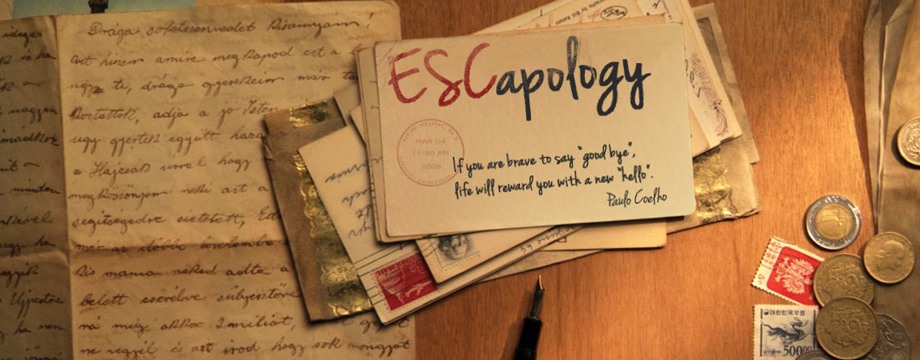
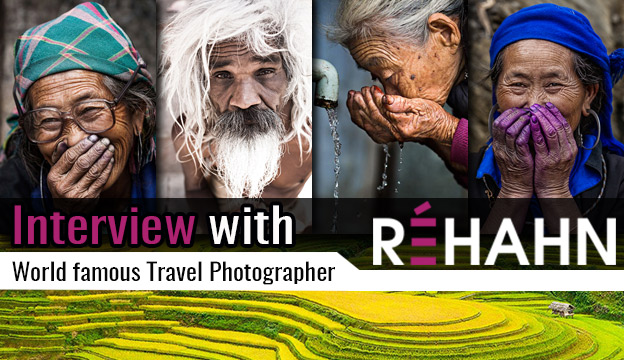
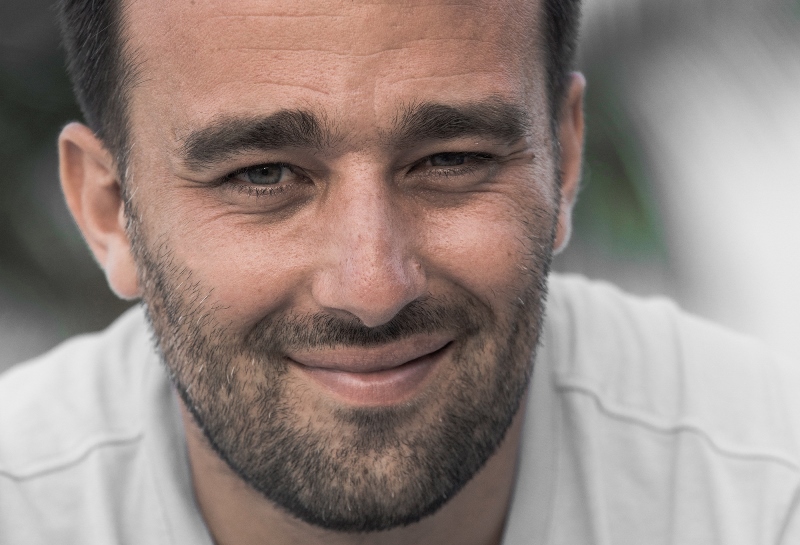


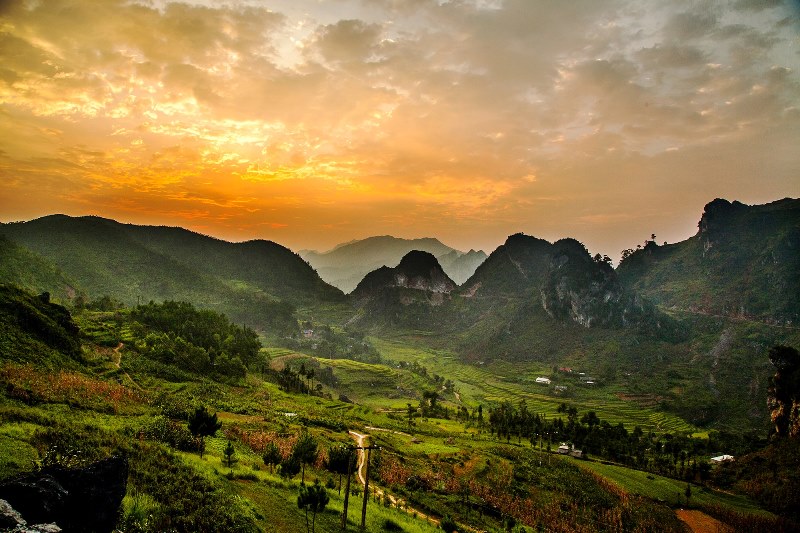

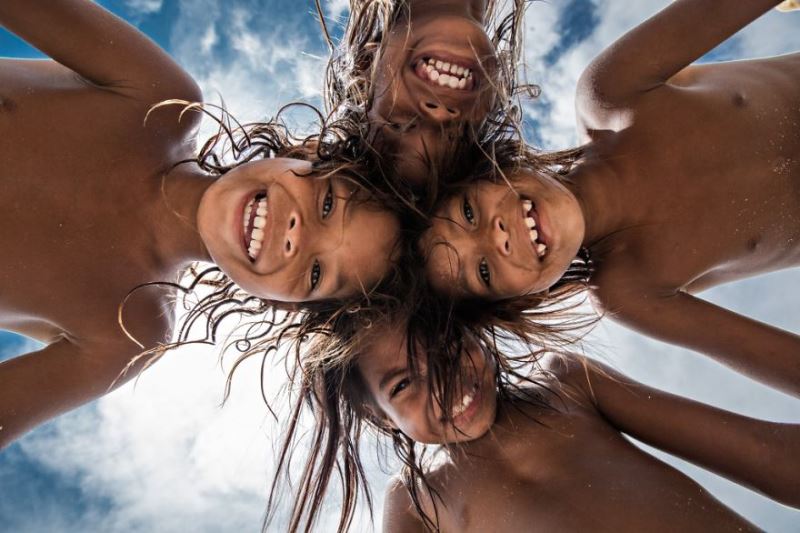











Love your work! Absolutely worth waiting for. Appreciate your hard work once again. 😉 x
Hi Grace, thanks so much. Took some time to arrange everything and do the proper write-up but I am happy with the final result. A real inspiration, at least for myself hehe and I hope also for others. Cheers and all the best. Philigran
Things like this are definitely an inspiration not just to you but for sure to many. The process is definitely not easy but the things that you’ve learn along the way is an absolute increase and treasure. The result is a bonus. I am very happy for you and where your journey is taking you. Thanks for sharing them in whatever form. I’d love to hear more Philigran! I almost forgot that name..ha!
Yeah, this journey… I am curious where it will eventually take me …. we will see I guess. Thanks Grace!!!
That’s good! Keep that curiosity. You need it to keep you from exploring! And just enjoy the journey that comes along the way. 😉 x
Your work is outstanding! It brings joy from even the most poverished areas. What a gift you bring people.. From those you photograph to those who view. I want to step into their world.
With much gratitude and blessings..
Hi Elizabeth, thanks for stopping by and your feedback. Everything you said is right and I am happy to have had the chance to talk to Réhahn about his journey. Thanks again, have a good rest of the week. Philipp
Sir Phil
you did it again hehehe…you never fail to give great interviews, honestly i dont know anything about photography but your blog makes it more interesting especially with this.
Strongly agree with Rehahn when he said that no one can be really natural within five minutes and the only and best way to do it, is to talk to the people you want to take a picture of, spend time with them and respect them…I guess that makes his pictures very beautiful.(starting to love natural portraits, thanks to you guys!)
Love the Temple Talk, aside from its really beautiful hmm..yeah..coz i love india..hehehe and the old women in Hoi An wearing the Salakot (hat) i love it too!i think shes very interesting.
hmm… more more of this:) galing!
Berns
Hi Berns, good to hear you like the interview, it was really interesting for me as well. I think Réhahn’s approach to portraits is totally right. It is also my experience that they turn out much better once you put in time to get to know your subject a little better. The temple talk picture is very unique and it got purchases by NG which plain awesome. OK Berns, will see wat will be up next.. all the best. Philipp
Hi, PipZ, Again, what a wonderful article. It kept me glued and wanted to read more…so easy to read, entertaining, informative and comprehensive. And the accompanying pics from Rehahn are just too good! Before this, I’ve never known him. In fact you already introduced two great photographers to us. And I could imagine just how they both inspire and motivate you! Someday, you’ll achieve what they have achieved..just be patient and focused. Your time to shine will come. Salute, Dines 😉